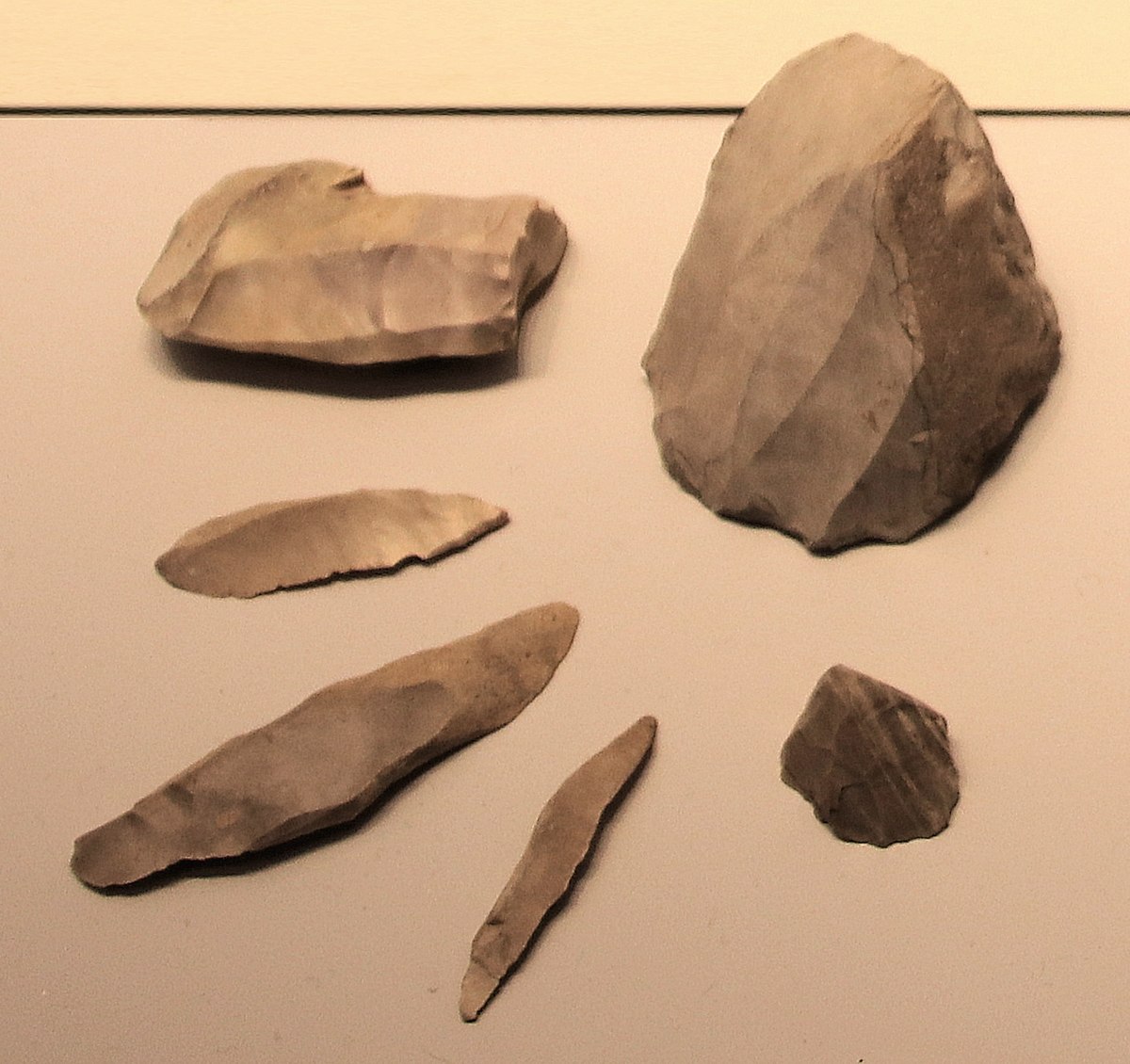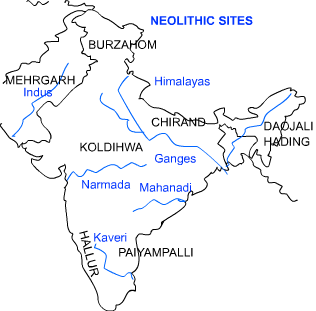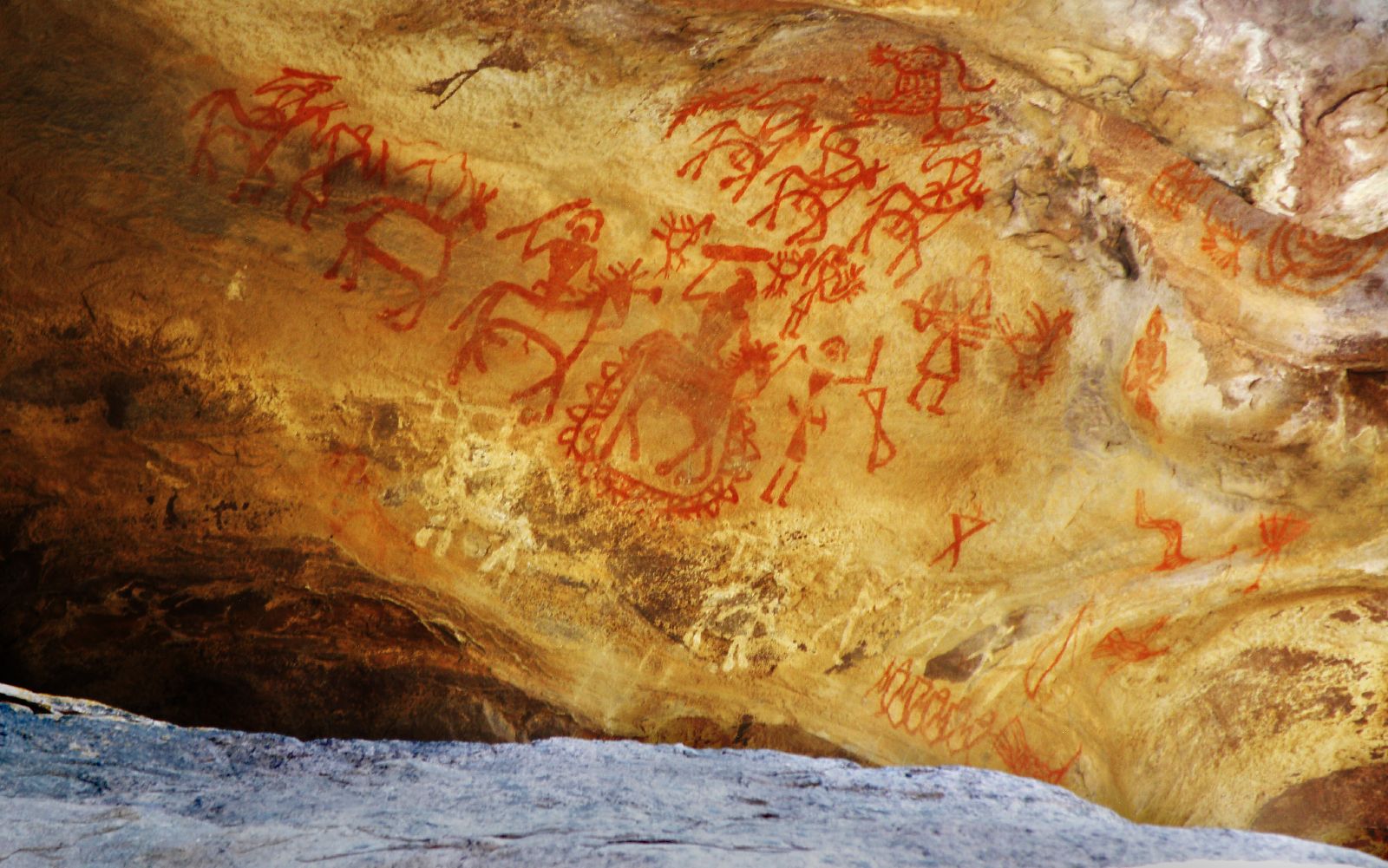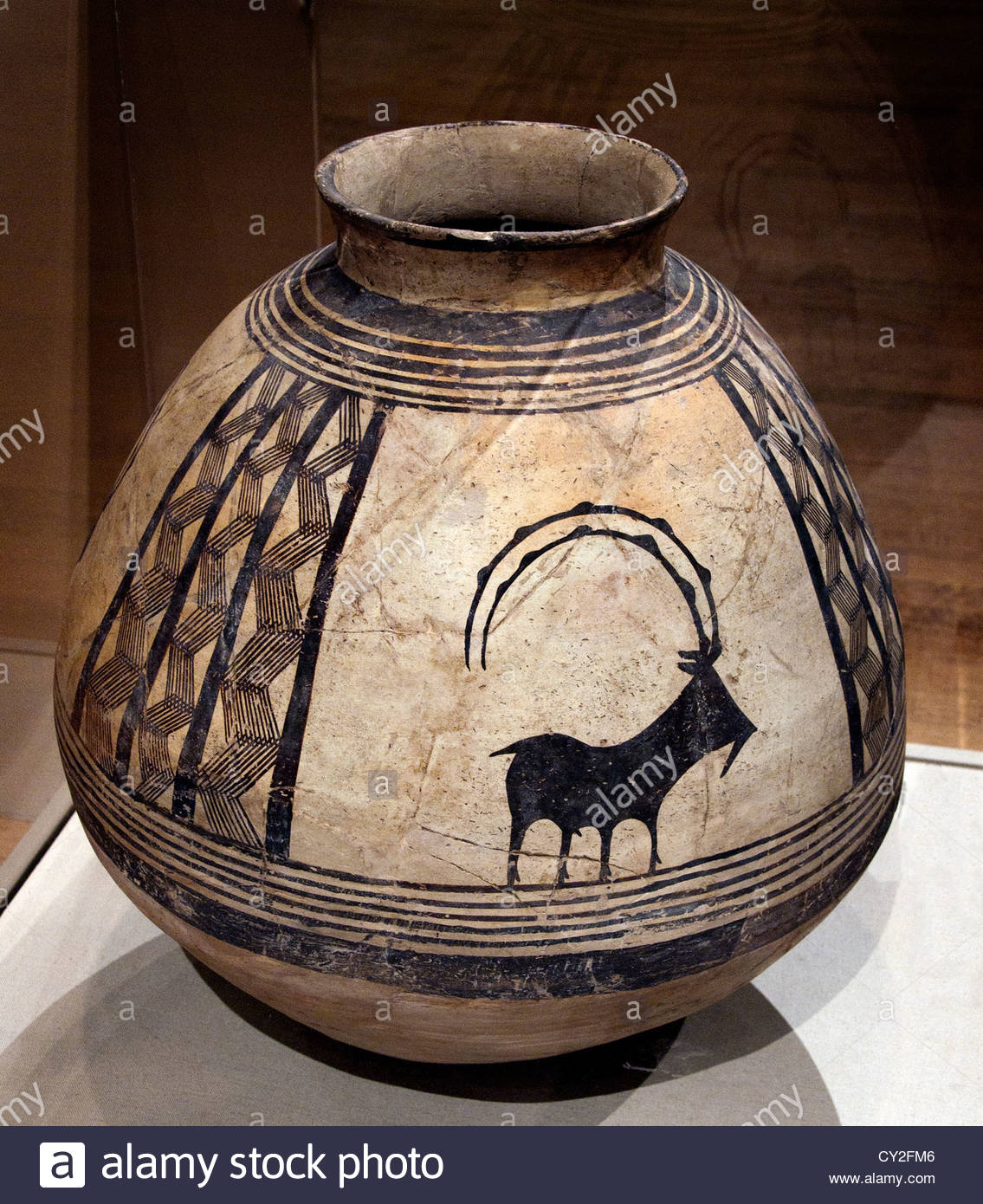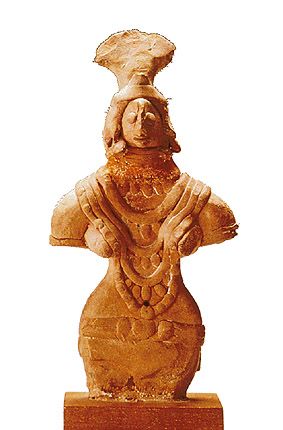October 22nd Static Quiz on Ancient History
Quiz-summary
0 of 10 questions completed
Questions:
- 1
- 2
- 3
- 4
- 5
- 6
- 7
- 8
- 9
- 10
Information
Ancient History Static Quiz on Prehistoric Age and Indus Valley Civilization
You have already completed the quiz before. Hence you can not start it again.
Quiz is loading...
You must sign in or sign up to start the quiz.
You have to finish following quiz, to start this quiz:
Results
0 of 10 questions answered correctly
Your time:
Time has elapsed
You have reached 0 of 0 points, (0)
Categories
- Not categorized 0%
- 1
- 2
- 3
- 4
- 5
- 6
- 7
- 8
- 9
- 10
- Answered
- Review
- Question 1 of 10
1. Question
Consider the following pairs:
Paleolithic Age Site State
1. Bhimbetka : Madhya Pradesh
2. Hunsgi : Karnataka
3. Daojali Hading : Arunachal Pradesh
4. Chirand : Uttar PradeshWhich of the above pairs are correctly matched?
CorrectAns:- a) 1 and 2
Explanation;-
Statement 3 and 4 is in Assam (Daojali Hading) and Bihar(Chirand) Respectively.
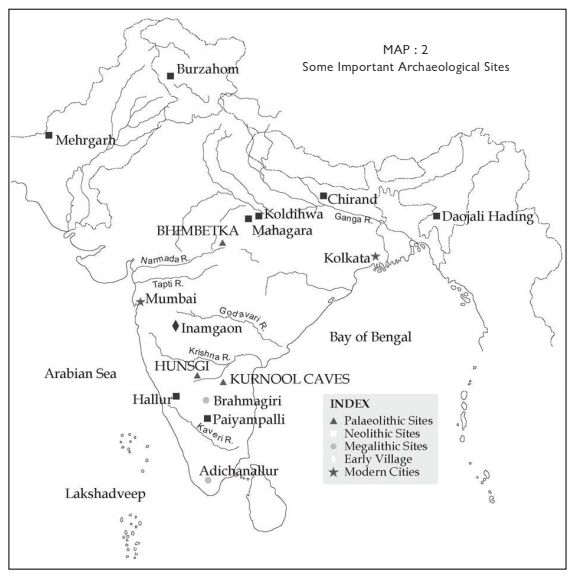 Incorrect
IncorrectAns:- a) 1 and 2
Explanation;-
Statement 3 and 4 is in Assam (Daojali Hading) and Bihar(Chirand) Respectively.

- Question 2 of 10
2. Question
Choose the false statement among the following statements:-
CorrectAns;- a) The period when we find environmental changes, beginning about 12,000 years ago till about 10,000 years ago is called the Mesolithic (middle stone). Stone tools found during this period are generally tiny, and are called Megalithics.
Explanation:-
Mesolithic Age was a ancient cultural stage that existed between the Paleolithic Period with its chipped stone tools, and the Neolithic Period with its polished stone tools. It is also called Microlithic age as the tools used were chipped stone tools also known as Microliths.
 Incorrect
IncorrectAns;- a) The period when we find environmental changes, beginning about 12,000 years ago till about 10,000 years ago is called the Mesolithic (middle stone). Stone tools found during this period are generally tiny, and are called Megalithics.
Explanation:-
Mesolithic Age was a ancient cultural stage that existed between the Paleolithic Period with its chipped stone tools, and the Neolithic Period with its polished stone tools. It is also called Microlithic age as the tools used were chipped stone tools also known as Microliths.

- Question 3 of 10
3. Question
Consider the following pairs with respect to Harappan civilization:
Stone/Metals Usage
1. Carnelian(red stone) : beads
2. Chert : weights
3. Copper and Bronze : tools, weapons, ornaments and vessel
4. Gold and Silver : ornaments and vessel
Which of the above pairs are correctly matched?CorrectAns:- d) 1,2,3 and 4
Explanation;- Self ExplanatoryIncorrectAns:- d) 1,2,3 and 4
Explanation;- Self Explanatory - Question 4 of 10
4. Question
Consider the following pairs:
Neolithic Age Sites State
1. Mehrgarh : Balochistan
2. Koldihwa : Madhya Pradesh
3. Burzahom : Jammu and Kashmir
4. Hallur : KarnatakaWhich of the above pairs are correctly matched?
CorrectAns;- d) 1, 3 and 4 only
Explanation;-
Koldihwa is in Uttar Pradesh.
 Incorrect
IncorrectAns;- d) 1, 3 and 4 only
Explanation;-
Koldihwa is in Uttar Pradesh.

- Question 5 of 10
5. Question
Consider the following statements:
1. AD stands for two Latin words, ‘Anno Domini’, meaning ‘in the year of the Lord’ (i.e. Christ).
2. Sometimes CE is used instead of AD and BCE instead of BC. The letters CE stand for ‘Common Era’ and BCE for ‘Before Common Era’.
Which of the statements given above is/are correct?CorrectAns;- c) Both 1 and 2
Explanation;-
Self ExplanatoryIncorrectAns;- c) Both 1 and 2
Explanation;-
Self Explanatory - Question 6 of 10
6. Question
The earliest inscription on stone was in which language? [UP-PCS 2009]
CorrectAns;- c) Prakrit
Explanation;-
The earliest inscription on stone were in Prakrit language and they are of Mauryan period. Among these the ancient one is of Sahgaura tamralekh, which have been excavated from the Gorakhpur district.The earliest deciphered epigraphy found in India are the Edicts of Ashoka of the 3rd century BCE, written in forms of Prakrit in the Brahmi script.
IncorrectAns;- c) Prakrit
Explanation;-
The earliest inscription on stone were in Prakrit language and they are of Mauryan period. Among these the ancient one is of Sahgaura tamralekh, which have been excavated from the Gorakhpur district.The earliest deciphered epigraphy found in India are the Edicts of Ashoka of the 3rd century BCE, written in forms of Prakrit in the Brahmi script.
- Question 7 of 10
7. Question
Which rock – shelter in India bears largest number of paintings? [UP-PCS 2008]
CorrectAns;- b) Bhimbetka
Explanation;-
The Bhimbetka (Madhya Pradesh) rock shelters are an archaeological site in central India that spans the prehistoric Paleolithic and Mesolithic periods, as well as the historic period. 8,000 BCE, corresponding to the Indian Mesolithic. These cave paintings show themes such as animals, early evidence of dance and hunting.
 Incorrect
IncorrectAns;- b) Bhimbetka
Explanation;-
The Bhimbetka (Madhya Pradesh) rock shelters are an archaeological site in central India that spans the prehistoric Paleolithic and Mesolithic periods, as well as the historic period. 8,000 BCE, corresponding to the Indian Mesolithic. These cave paintings show themes such as animals, early evidence of dance and hunting.

- Question 8 of 10
8. Question
Which one of the following sites has yielded the cultural remains from Neolithic to Harappan period? [UP-PCS 2008]
CorrectAns;- b) Mehrgarh
Explanation;-
Mehrgarh (Pakistan) sites has yielded the cultural remains from Neolithic to Harappan period.IncorrectAns;- b) Mehrgarh
Explanation;-
Mehrgarh (Pakistan) sites has yielded the cultural remains from Neolithic to Harappan period. - Question 9 of 10
9. Question
Who among the following cultures were the first to paint their pottery? [NDA 2012-II]
CorrectExplanation;-
Chalcolithic Cultures were the first to paint their pottery.Chalcolithic Age. Chalcolithic Era, the first metal age, is marked by the occurrence of distinct cultures in various parts of our country namely – Ahar culture in South Eastern Rajasthan, Malwa culture in Western MP, Jorwe culture in Western Maharashtra, etc. People of this age used different kinds of pottery.
 Incorrect
IncorrectExplanation;-
Chalcolithic Cultures were the first to paint their pottery.Chalcolithic Age. Chalcolithic Era, the first metal age, is marked by the occurrence of distinct cultures in various parts of our country namely – Ahar culture in South Eastern Rajasthan, Malwa culture in Western MP, Jorwe culture in Western Maharashtra, etc. People of this age used different kinds of pottery.

- Question 10 of 10
10. Question
An upper Paleolithic Mother Goddess made of bone has been obtained from ?
CorrectAns;- d) Belan valley
Explanation;-
Mother goddess of bone has been obtained from the upper Paleolithic level of the Belan valley in Uttar Pradesh.
 Incorrect
IncorrectAns;- d) Belan valley
Explanation;-
Mother goddess of bone has been obtained from the upper Paleolithic level of the Belan valley in Uttar Pradesh.


